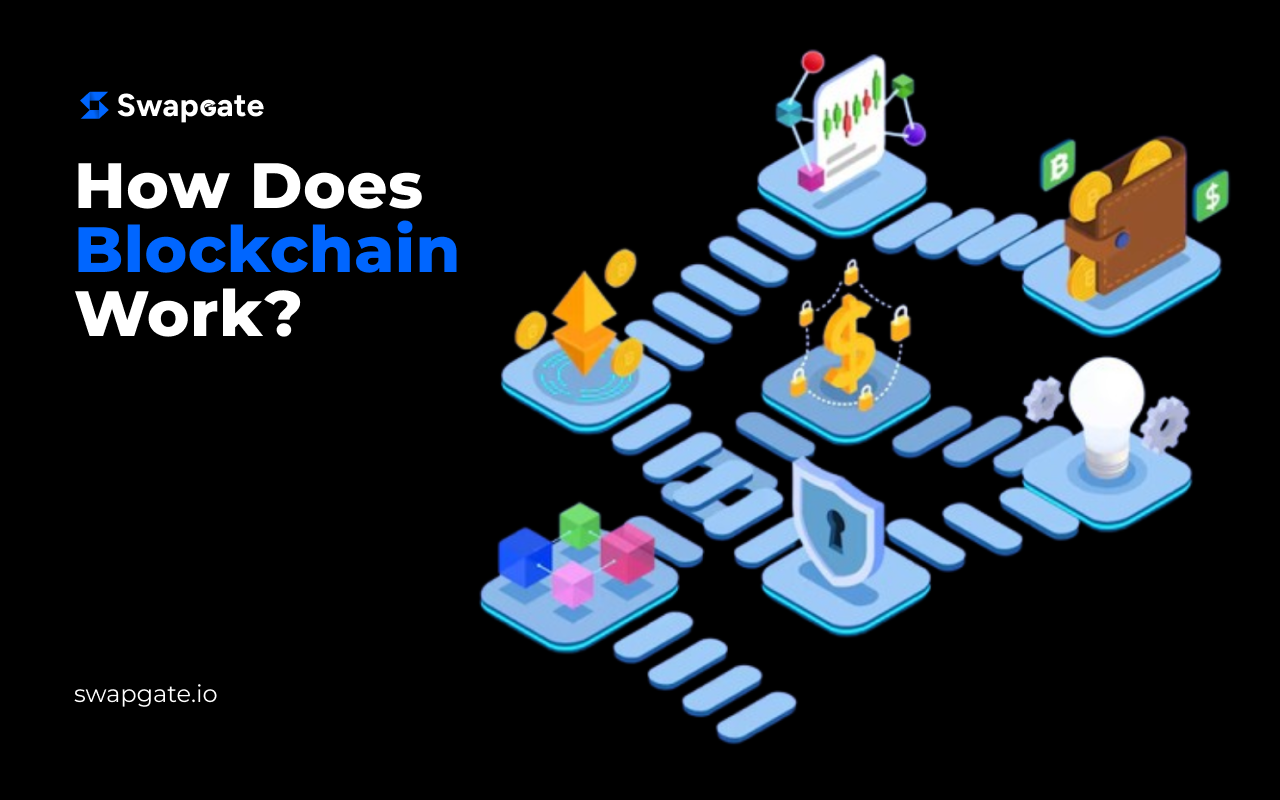
The advent of blockchain technology marked the beginning of the cryptocurrency era, causing a significant stir in the digital world. However, this change did not happen overnight. How does blockchain work, why was it created, and what are its key benefits? Let’s explore these questions with SwapGate.
How Does Blockchain Work?
Blockchain is a distributed database that functions as a digital ledger. Transaction data is recorded in blocks and then linked together to form a single chain, continuously updated in real time. This makes blockchain a transparent and secure system, where every block is verified for authenticity by network participants.
How does blockchain work? It ensures decentralized data storage, making it more secure against attacks or fraud compared to traditional centralized systems, such as banking institutions or government services.
When Was Blockchain Created and Why?
The idea of blockchain was first proposed in 2008 by an anonymous user under the pseudonym Satoshi Nakamoto, at the same time the first cryptocurrency, Bitcoin, was released. The creator(s) aimed to solve the problem of double spending — one of the main challenges in digital payments, where the same amount of money could be spent twice. Blockchain became the key element of this system, offering a new model that allowed decentralized nodes to verify transactions and ensure their security.
In fact, blockchain was not only created for cryptocurrency but also to expand the possibilities of distributed databases in other industries. Today, this technology is used in logistics, healthcare, and financial services to ensure transaction transparency and security.
Blockchain: The Foundation of Cryptocurrencies
With the creation of Bitcoin, blockchain was used for the first time to support cryptocurrency operations. How does blockchain work in this context? Any user on the network can initiate a transaction, which is recorded in a block, then included in the blockchain, and other nodes verify its authenticity. This process relies on cryptographic protection, making it secure and resistant to interference. While it may sound complex, the process is quite straightforward.
Thanks to blockchain, Bitcoin and other cryptocurrencies operate without intermediaries, such as banks, giving users more control and freedom. Furthermore, blockchain enables smart contracts, which can automate processes without the need for third-party involvement.
Why is Blockchain Secure and Decentralized?
One of blockchain’s main advantages is its security. How does blockchain work in terms of security? All the information in the blocks is encrypted, and each new block is linked to the previous one through a unique hash (which any user can track). This means that any attempt to alter data in one block would require changing all subsequent blocks, which is nearly impossible in a decentralized network.
Additionally, blockchain is decentralized—data is not stored in a single location but distributed across many nodes. Even if one node is hacked or fails, others preserve the data’s integrity. This makes blockchain resilient to attacks and fraud.
You can take advantage of cryptocurrency with SwapGate. This online crypto exchange offers the best market rates, no KYC, and a fast, hassle-free process for crypto-to-crypto exchanges. The wide selection of currency pairs allows users to experience the full potential of crypto transactions.
Conclusion
Blockchain is one of the most innovative technologies of our time, transforming security, transparency, and decentralization. How does blockchain work? It connects nodes, ensures data protection, and eliminates the need for central intermediaries. Blockchain has become the foundation of cryptocurrencies, but its potential extends far beyond — from finance to asset management and logistics. In the future, blockchain technology is likely to find even more applications in various spheres of our lives.